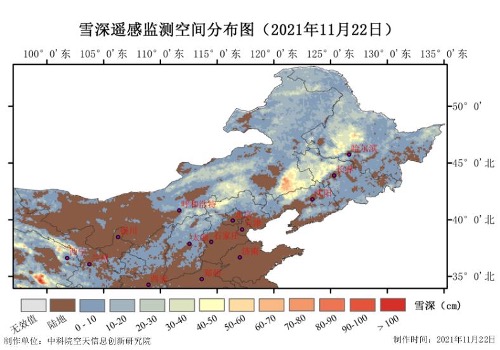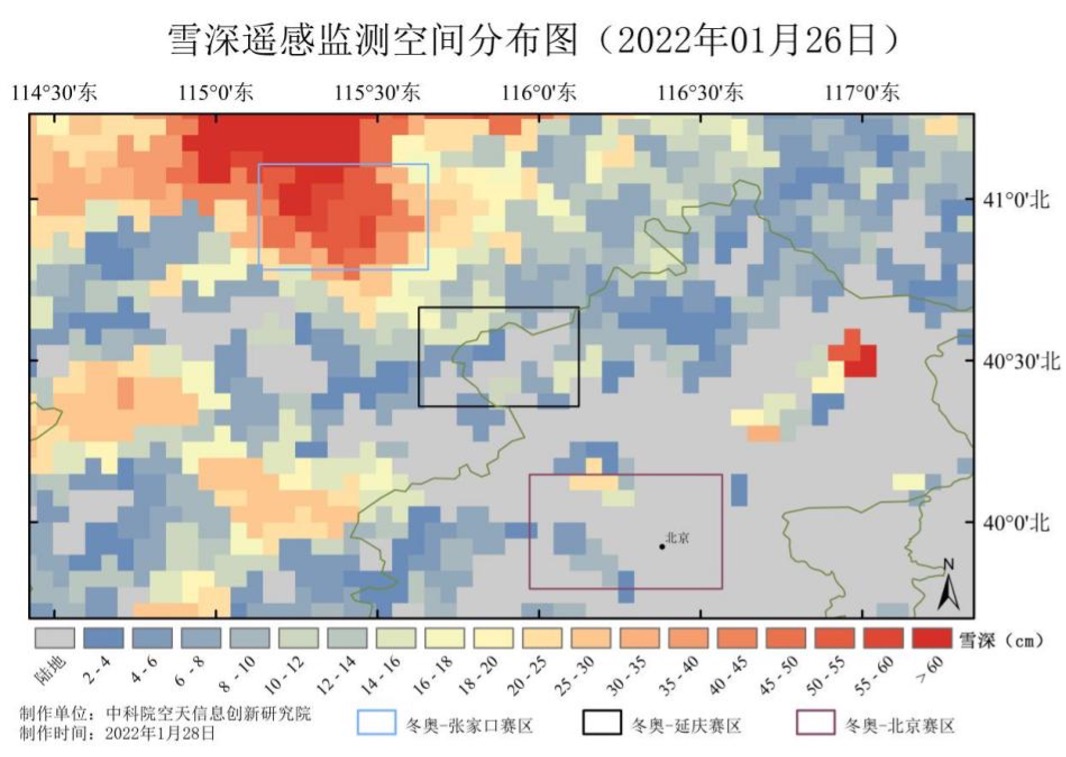Remote Sensing Facilitates Snow and Ice Occurrents Management of China
Several cold waves swept across most parts of China since November 2021, causing record-hit snowfall and plummeting temperature. A research team led by Dr. QIU Yubao from the Aerospace Information Research Institute (AIR), Chinese Academy of Sciences (CAS), in collaboration with the National Disaster Reduction Center of China, provided remote sensing monitoring service on snow and ice as an emergency management approach for the occurrences of snow in northern China, as well as the snow and freezing rain in southern China from November 2021 to the end of February 2022.
This service, employed the satellite-based high-frequency microwave detections, combing with atmospheric correction technology, is capable of detecting fresh, shallow snow and new occurrence of ice.
Responding to the cold snap in November 2021, the research team provided valued data of snow coverages and depth variations at a daily basis in north and northeast China, including big cities of Beijing and Tianjin, and Hebei, Inner Mongolia, Liaoning, Jilin and Heilongjiang province (shown in Fig. 1), identifying snow and ice affected regions and evaluating the level of snow risk there.
Several southern provinces saw freezing rain and snowfall during the spring festival of 2022, posing serious challenges on local transportation, power security and agricultural production. The research team provided detailed information on the process of rain and snow in terms of intensity and distribution, helping local authorities with the emergency and risk management.
In addition, snow service also contributed to the Beijing Winter Olympic Games (shown in Fig. 2) by estimating the changes of snow cover and depth.
From the end of 2021 to the middle and late February of 2022, a total of eight assessment reports had been reported to decision makers, helping governmental authorities cope with the extreme weather conditions effectively with emergency warning systems.

Fig. 1. Mapping of snow depth remote sensing in northeast and farther north of China on November 22, 2021. (Image by AIR)

Fig. 2. Spatial distribution estimating of snow depth for the Beijing Winter Olympic Games on January 26, 2022. (Image by AIR)

Fig. 3. Processing of trend for freezing rain and snowfall in mountainous areas of southern China from Feb. 4 to 7. On Feb. 4, freezing signals were detected in some areas of Guangxi and Hunan. After the rain and snow process, some areas of Jiangsu, Anhui, Jiangxi and Hunan were obviously affected by freezing rain and snow weather since Feb. 7. Among them, Lu'an City, Anqing City and Chizhou City in Anhui Province were most seriously affected; Xianning City in Hubei Province, Shaoyang City, Loudi City and Yiyang City in Hunan Province were affected to varying degrees. (Image by AIR)



News & Events